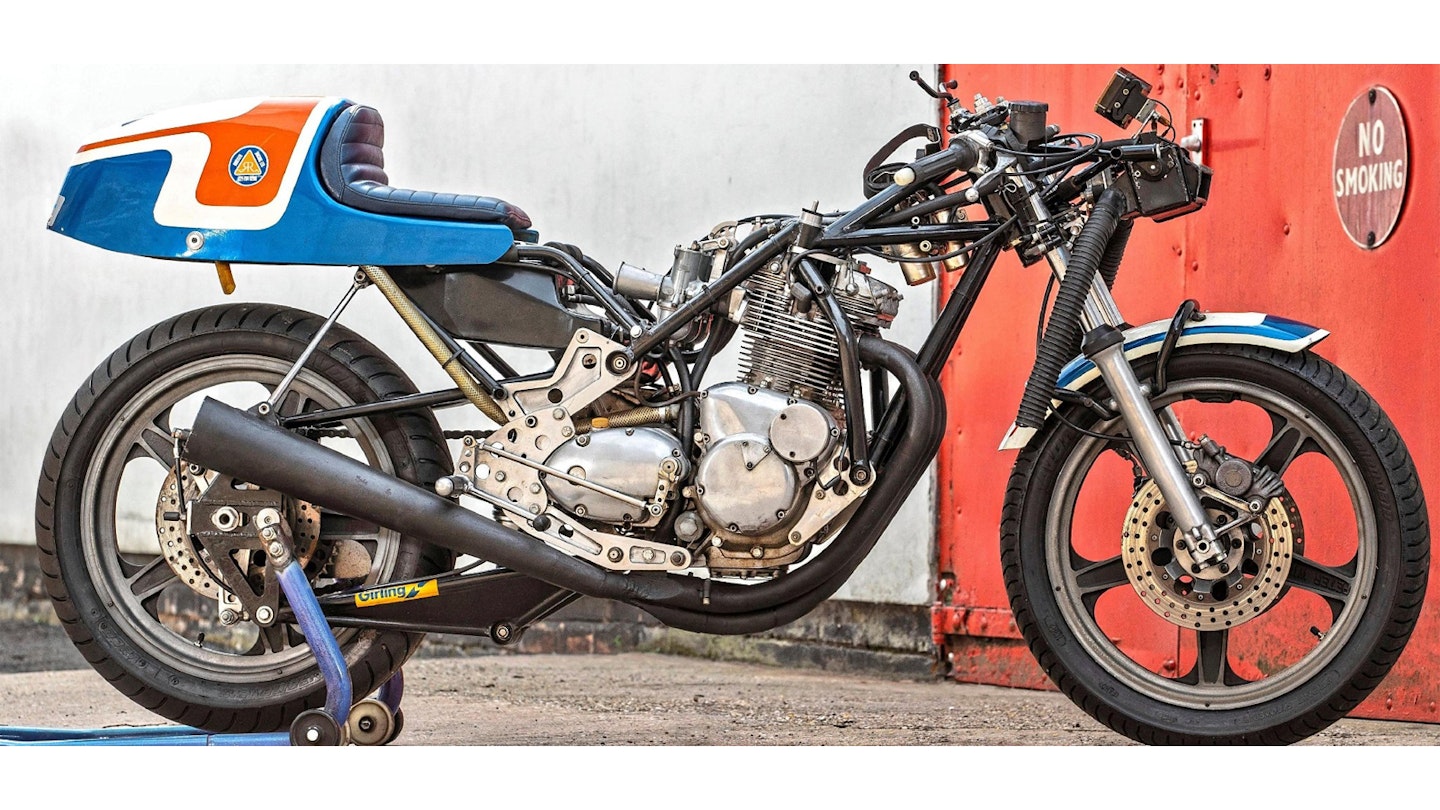The Rustler BSA was like no other British racing triple before or since. It took on the TT with a home-brewed chassis – and now it’s been taken back to running condition
Words MICK DUCKWORTH Photography CHIPPY WOOD & ISLAND PHOTOGRAPHICS

The Rustler BSA is a machine whose construction is as intriguing as the man behind it. This is a unique ’70s British triple with a monoshock parallelogram rear suspension system, created to race at the Isle of Man TT by a man who was “not interested in the ordinary,” in the words of his widow. And after a six-year lay-up, it has been returned to running condition with her blessing.
Martin Russell was a former BSA factory technician whose speciality was fault rectification, although his time at BSA’s Small Heath factory ended abruptly in August 1973. Akeen endurance racer, on his return from a 24-hour race at Spa in Belgium, he handed works manager Alistair Cave the Princess Paola Manufacturer’s Trophy won by BSA, after he and co-rider Pete Bates (on Pete’s ex-works Rocket 3) were amongst three well-placed BSAs. That cut no ice, though – he was a day late back at work (he blamed the après-race champagne) and was was sacked on the spot.

But a man with Martin’s talents wasn’t out of work long in those days – and he continued to race in his spare time. At his first TT in 1974, racing his Production 750cc BSA Rocket 3, he realised how bumpy the Mountain Course was – and noticed that the final-drive chains of the fastest machines were virtually dragging on the ground by the end of a race. As a man fascinated by problem solving, he pondered the TT Course issues and began making countless sketches for his ultimate racing chassis in early 1975. They were to be the genesis of the Rustler BSA.
To address chain wear, he chose to replace conventional swingarm twin-shock rear suspension with a monoshock parallelogram system that would maintain constant chain tension over bumps. It would have the added benefit of pushing the rear wheel down onto the road during acceleration, while avoiding ‘squat’ where the suspension is fully compressed.
MV Agusta’s earliest shaft-drive racing 500cc fours of 1950 had also used parallelogram rear suspension in conjunction with torsion bars. In the mid-1970s the system was tried out in endurance racing by the Dholda Honda equipe, as well as on the Mead &Thompkinson Laverda nicknamed ‘Nessie’. The US Kawasaki team had also briefly experimented with a parallelogram swingarm.
